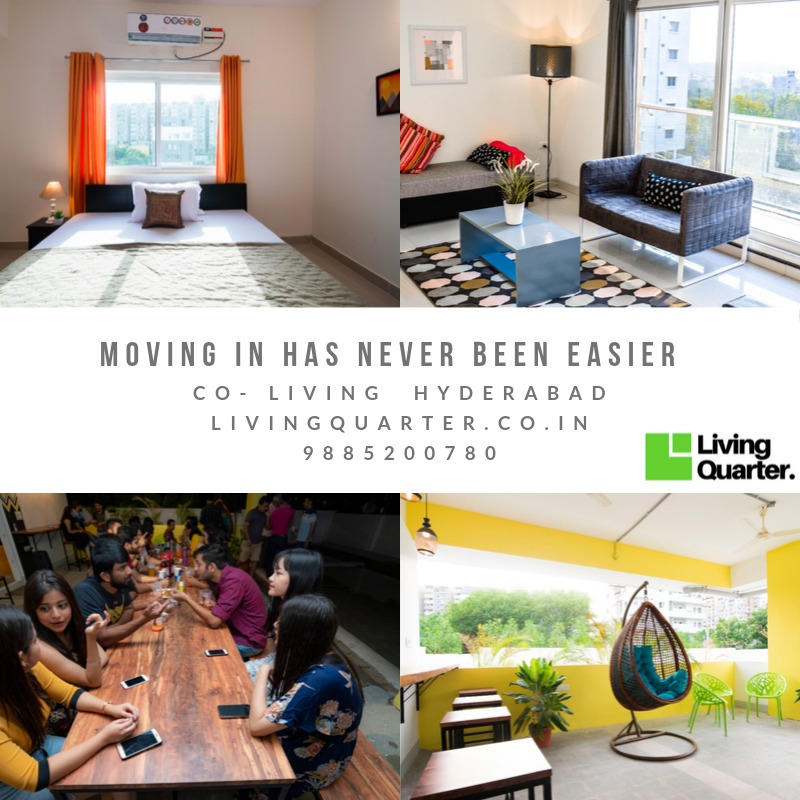What is The Next Level of Living Comfort in Co-Living Communities?
Co-living communities are residential arrangements that promote a sense of community among inhabitants by providing shared living areas and amenities. In these communities, families or individuals share a common living space, usually in a single structure or collection of interconnected Apartments for Bachelor girls in Hyderabad. A balance between private and public areas is intended by co-living arrangements to promote social interaction and teamwork among inhabitants.
Co-living communities can take their living comfort to the next level by implementing creative and considerate methods to improve residents’ convenience, general satisfaction, and well being. The changing landscape of co-living comfort is reflected in the following trends and factors:
Smart Living Areas:
incorporating smart home technology to improve energy efficiency, security, and convenience. Automated home controls, smart lights, and thermostats all add to a seamless and technologically advanced living environment.
Personalization and Adaptability:
allowing for individualized area customization and adaptable living configurations. The ability to customize design options, rearrange layouts, and have modular furniture gives inhabitants a sense of control over their living space.
Health Concerned Design:
utilizing design features that support mental and physical health. Fitness areas, indoor plants, lots of natural light, and biophilic design all support a comprehensive approach to wellness.
Encompassing Lifestyle Services:
offering a variety of services, such as counseling, fitness classes, wellness programs, and educational workshops, to support the lifestyles of the inhabitants. This all-encompassing strategy attempts to address a number of well-being issues for the population.
Ecological Methods:
embracing environmentally beneficial projects, including waste reduction campaigns, sustainable building materials, and energy-efficient appliances. Eco-conscious residents are drawn to co-living communities that have a strong commitment to environmental sustainability.
Technology Mediated Community Participation:
Raising community involvement through the use of digital channels. Social networking apps, online gatherings, and community forums can help locals connect and communicate.
Improved Public Areas:
Putting comfort, style, and utility first when designing public spaces. Co-working spaces, rooftop gardens, and lounges are examples of well designed common areas that enhance and enrich the living experience.
Culinary Experiences:
Enhancing the co-living communities’ culinary culture by providing gourmet kitchens, on-site chefs, or collaborations with nearby eateries. Having access to a variety of fine dining experiences improves one’s lifestyle in general.
Safety and Health Measures:
Putting in place cutting-edge health and safety precautions, particularly in reaction to international events. This could involve strong emergency planning, improved cleaning procedures, and touchless technologies.
Platforms for Collaboration:
Enabling residents to work together and share resources via digital platforms. Initiatives from the shared economy, such as pooling resources for tools, equipment, or transportation, may fall under this category.
Diverse and Inclusive Communities:
Promoting welcoming, diverse communities that embrace diversity. Living in co-living settings that actively encourage cultural understanding, acceptance, and exchange makes for a more fulfilling and peaceful environment.
Opportunities for Networking and Professional Development:
Providing events and programs that foster networking and professional development among locals. This could entail networking opportunities, workshops, and access to resources for professional and personal growth.
Co-living communities salient characteristics include:
Common Living Areas:
Common areas, living rooms, and kitchens are frequently shared by residents of co-living communities. The purpose of these areas is to encourage communication and cooperation among the occupants.
Individual Bedrooms:
For privacy and personal space, residents usually have separate bedrooms. Depending on the particular co-living arrangement, there are differences in the ratio of private to communal spaces.
Activities and Events in the Community:
To help residents interact and form relationships, a lot of co-living communities host social events, activities, and community gatherings. These get-togethers could involve communal meals, seminars, and leisure pursuits.
Convenience and Flexibility:
Co-living situations frequently include variable lease terms, which facilitate people’s in- and out-of-state moves. Furthermore, for convenience, a few co-living locations offer maintenance, cleaning, and common amenities.
Various Communities:
Co-living communities draw members of all ages, vocations, and backgrounds. This diversity fosters a lively sense of community and rich cross-cultural exchange.
Facilities and Amenities:
Co-working spaces, exercise centers, rooftop gardens, and recreational facilities are just a few of the advantages that co-living places may provide. The general quality of life for people is improved by these amenities.
Cooperative Lifestyle:
One of the main features of co-living communities is collaborative living. A sense of shared ownership is created when residents frequently split up domestic chores like cleaning and upkeep.
Urban Locations:
Situated in urban locations, co-living communities often offer easy access to public transportation, cultural activities, and places of employment. People looking for a vibrant, connected lifestyle frequently find this place to be intriguing.
The next level of living comfort in Shared Bachelor accommodation in Gachibowli is a holistic strategy that takes care of residents’ physical, social, and emotional needs as co-living continues to develop. The focus is on designing environments that offer a higher quality of living in addition to satisfying fundamental requirements.

